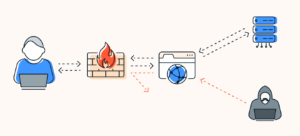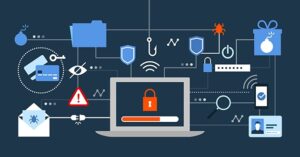For years, personal finance advice has centered on the budget. “Track every penny,” “cut your lattes,” and “stick to the plan” have been the mantras. A budget is a powerful tool—the map that shows you where your money is going—but it is ultimately a reactive measure. It helps you manage the money you have now.
True financial resilience, however, requires looking beyond the monthly budget cycle to build a defensive wall against life’s inevitable surprises. This is the realm of the financial cushion, a concept that goes far beyond a basic emergency fund. It is the core of a proactive financial life, providing peace of mind, stability, and the freedom to pursue long-term goals without fear.
The Foundation: Why a Cushion is More Than an Emergency Fund
The common wisdom is to save three to six months of essential living expenses in an emergency fund. This is the absolute minimum requirement—your financial life preserver.
However, a financial cushion is a deeper, more comprehensive concept. It’s the whole safety net, not just the single rope.
An Emergency Fund is for sudden, high-impact crises:
- Unexpected job loss.
- Major medical emergency.
- Sudden, essential home repair (e.g., burst pipe).
A Financial Cushion is a layered defense that covers emergencies and minor, but budget-disrupting, events:
- The $500 car repair that would wipe out your “fun” budget.
- A major insurance deductible you have to pay upfront.
- A period of reduced work hours or unexpected income lag.
- The cash needed to pay a deductible on a larger expense.
In short, an emergency fund prevents catastrophe; a financial cushion prevents stress, debt, and derailment of your long-term plans. It keeps small financial “curveballs” from turning into major “strikes.”
Step 1: Mastering Your Monthly Cash Flow
Before you can build a massive cushion, you need to seal the leaks in your monthly finances. This starts with recognizing the difference between your Fixed and Flexible expenses.
The Budget Audit: Finding Hidden Savings
The first step is a rigorous Spending Audit. Track every dollar for 30 to 90 days. This isn’t just about what you spend, but why you spend it.
- Attack “Subscription Creep”: Identify all recurring payments. Are you paying for three streaming services, two gym memberships, and a software subscription you barely use? Cutting just $50 a month nets $600 a year for your cushion.
- Review Insurance and Utilities: When was the last time you shopped around for a better rate on car or home insurance? A simple quote comparison can often lead to significant annual savings. Likewise, look for energy-saving tips to lower utility bills.
- Optimize Grocery Spending: Food is often the second-largest expense. Plan meals, use unit pricing, and reduce waste. This is a high-impact area for finding consistent savings.
The goal here is to create an intentional gap between your income and your expenses—a surplus that you can dedicate entirely to your cushion.
Step 2: The Two Pillars of Your Cushion
Once you have a consistent surplus, you need to structure your savings into distinct, purpose-driven accounts.
Pillar A: The Ultra-Liquid Safety Net (0-3 Months)
This is the immediate, non-negotiable layer. This money must be:
- Accessible: Held in a High-Yield Savings Account (HYSA). It must be liquid enough to access immediately without penalty.
- Safe: FDIC-insured. The primary goal is preservation of capital, not growth.
- The Target: Aim to build this account up to three months of your minimum essential expenses (rent/mortgage, minimum debt payments, food, insurance, utilities).
Automate Your Savings: The single most effective strategy is to “pay yourself first.” Set up an automatic transfer to your HYSA that occurs the day after your paycheck lands. Treat this transfer like a bill; it is non-negotiable.
Pillar B: The Extended Resilience Fund (3-6+ Months)
Once Pillar A is fully funded, you start building the true cushion that allows you to weather longer storms, like a six-month job search or a major health crisis.
- The Target: Increase your cushion size to six to twelve months of living expenses. The size depends on your personal risk tolerance, job stability, and family situation. Self-employed individuals or those in volatile industries should aim closer to the 12-month mark.
- Where to Store It: While still prioritizing safety, you can explore slightly different homes for the excess beyond the ultra-liquid fund. Certificates of Deposit (CDs), especially those staggered (a CD ladder), or very safe, short-term Treasury Bills (T-Bills) can offer slightly higher returns while maintaining a high degree of safety and access. Consult a financial professional before moving beyond FDIC-insured accounts.
Step 3: Proactive Cushion-Building Strategies
Building a large cushion requires more than just cutting expenses; it often means strategically increasing your savings potential.
Embrace the “Windfall” Strategy
A windfall is any unexpected increase in cash flow. This includes:
- Tax Refunds: Dedicate 100% of your tax refund to your cushion.
- Work Bonuses: Immediately transfer a significant portion into your resilience fund.
- Credit Card Rewards/Cashback: Instead of spending the rewards, cash them out directly into your savings account.
- “Found Money”: Selling unused items, getting a rebate, or receiving a gift of money.
By treating windfalls as capital for your cushion rather than spending money, you accelerate the building process significantly.
The “Paycheck Lag” Buffer
A common source of financial stress is the gap between when a bill is due and when your paycheck arrives. A well-designed cushion can eliminate this stress entirely.
The ultimate goal is to have one full month of living expenses sitting in your checking account at all times. This means the money you earn in January pays the bills you incur in February. If you can achieve this, a late paycheck or a minor unexpected expense will no longer cause an overdraft or a missed payment.
Look for Income Opportunities
Sometimes, reducing expenses can only take you so far. To build a truly robust cushion, you may need to increase your income. This doesn’t have to mean a new career, but rather a temporary (or permanent) side hustle:
- Freelance or Gig Work: Offer a skill you already have (writing, design, consulting) on a part-time basis.
- Selling Assets: Declutter your home and sell unused items online.
- Temporary Part-Time Work: Take on a seasonal or weekend job to pour 100% of that new income into your savings.
Beyond the Money: The Psychological Cushion
The value of the financial cushion isn’t purely monetary; it’s profoundly psychological.
When you have a fully funded cushion, you gain:
- Negotiating Power: You are less reliant on your current employer and can negotiate better terms, or even confidently walk away from a toxic job.
- Better Decision-Making: You can take time to think through major financial decisions (like buying a car or a house) without being pressured by urgency or desperation.
- Health and Well-being: Financial stress is a leading cause of physical and mental health issues. A cushion is a powerful antidote to anxiety.
The ultimate vision of a life beyond the budget is one where you move from merely reacting to your finances to intentionally designing your future. Your budget keeps the ship afloat; your financial cushion is the robust hull that protects it from every storm. Start small, be consistent, and watch as your financial resilience—and your peace of mind—grows.



